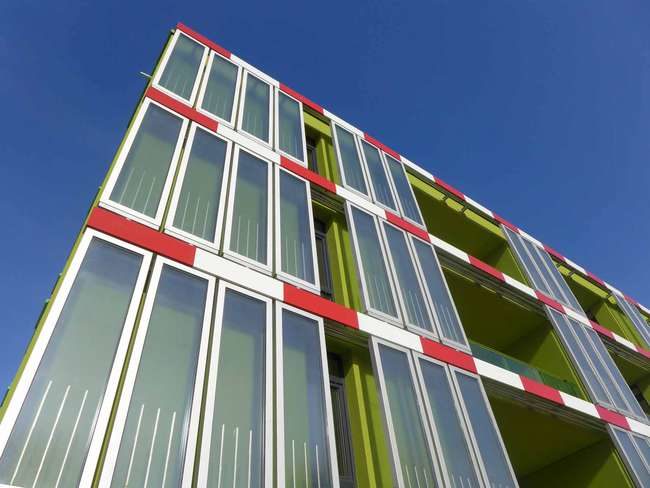In 2007 the International Building Exhibition (IBA) Hamburg – a real-time urban research and development laboratory – began to shine its spotlight on the city’s Wilhelmsburg district, the world’s largest inhabited river island outside Manhattan.
IBA Hamburg follows the unmitigated, mixed-used triumph of Hamburg’s HafenCity. Ten years ago HafenCity was an abandoned port and industrial center, wasting away on the Elbe River. Now it’s a bustling nexus for jobs, homes and leisure activities, punctuated with landmark designs by Herzog & de Meuron, Behnisch Architects and Richard Meier & Partners, among others.
In late March, IBA Hamburg unveiled its grand finale for Wilhelmsburg, with more than 60 building projects in and around the Elbe Islands. Scheduled to run through November 3, it’s funded with one billion Euros from a wide range of sources, including the City of Hamburg, the German government, the European Union, and a number of private investors.
More than 55,000 people from about 100 different nationalities call Wilhelmsburg home – some for many generations, others more recent. Planners view the area as a strategic springboard for a “leap over the Elbe” between HafenCity to the north and Harburg in the south. “Hamburg is growing rapidly – between 10,000 and 20,000 people are coming here every year,” says IBA Hamburg spokesman Rainer Müller. Developing this site is one way for the city to grow without pushing out into greenbelts.
Development of the new Wilhelmsburg district is based on a master plan by the Dutch/Luxembourgeois planning office of Jo Coenen & Co., in collaboration with the French and German landscape planners, Agence Ter.
Hamburg is striving to balance its growth in the Elbe Islands sensitively, along social and ecological lines. Wilhelmsburg has stood neglected for the past 50 years, home to high crime and unemployment. The new plan means improved standards – rather than relocation – for those living there now, and new homes for those arriving more recently. “There are eight new schools or education centers,” Müller says. “And we’re able to keep rents down while improving old houses.”
With a mix of housing, offices, retail and services, the new plan calls for a core that dovetails the use of water, trees, footpaths, and green space. In its “Building Exhibition within the Building Exhibition,” the IBA Hamburg developed case studies based on four themes: Smart Material Houses, with innovative construction materials; Smart Price Housing, for effective, inner-city building solutions; Hybrid Houses, for flexible living adapted to residents’ needs; and Water House concepts, centering around and incorporating water (both as resource and risk).
The exhibition is comprised of 18 futuristic dwellings/show case houses, some with integrated offices, and 170 flats. “They are innovative, experimental and maybe futuristic,” Müller says. Among the sites drawing crowds is a Smart Material Houses called the BIQ apartment building – the world’s first structure with a bioreactor facade. Microalgae are cultivated in glass elements that make up its “bio skin”; they’re then used to produce energy, control light, and provide shade.










Post a comment to this article
Report Abusive Comment